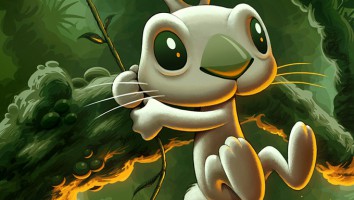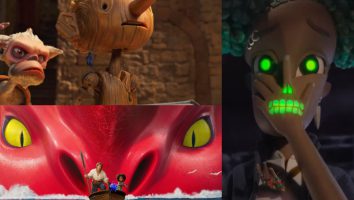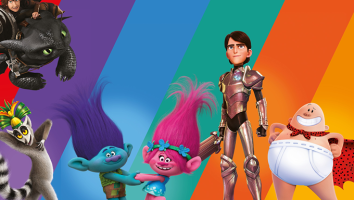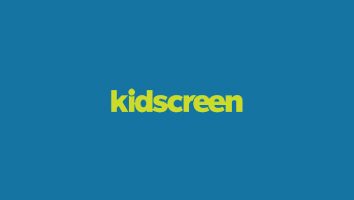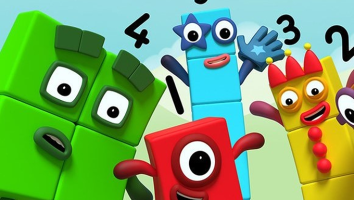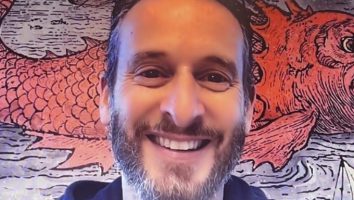 With a 2023 Oscar nomination in his pocket and a new overall deal at Netflix, veteran animated film director Chris Williams is feeling bullish about his prospects for pushing the boundaries of storytelling in 2024.
With a 2023 Oscar nomination in his pocket and a new overall deal at Netflix, veteran animated film director Chris Williams is feeling bullish about his prospects for pushing the boundaries of storytelling in 2024.
Williams is the capitan (er, director) of The Sea Beast, a Netflix Original movie that is nominated for Best Animated Feature at this year’s Academy Awards. The film was a “monster” hit for Netflix, where it currently reigns supreme as the most-viewed animated feature in platform history with 165 million hours of watch time. This success surprised many, given the pic’s complex storytelling and an approach to dialogue and plot that one reviewer noted “doesn’t talk down to kids.”
It’s an approach Williams—a Canadian-American director who spent 25 years with Disney before striking out on his own in 2018—is keen to keep exploiting as part of his new deal at Netflix. He has two films in development for the platform—an animated sequel to The Sea Beast and an ambitious take on fantasy (think The Princess Bride, but for young kids).
Kidscreen recently caught up with Williams to talk about his new slate, why it works at Netflix, and how he plans to engage today’s kids and parents in an almost infinite universe of entertainment options.
KS: How is your overall deal with Netflix shaping up? What’s next on the slate?
CW: I’m working on a couple of different projects right now at Netflix Animation, and one of them is a potential sequel to The Sea Beast. When we made the movie, we didn’t think of it in terms of a franchise, so it really allowed us to make the movie we wanted to make without having to worry about a sequel. In the end, it all wrapped up nicely.
In the sequel, I imagine Jacob, Maisie and Blue forming a small family, and like any family, they will have challenges and problems. I imagine Jacob as a new father who suddenly starts taking care of Maisie. The challenges that may arise between them would be an interesting thing to explore, especially given how willful and brave Maisie is.
KS: And the second project?
CW: One of the things I’ve always wanted to do is to tell a pure fantasy story in an animated film, and Netflix is allowing me to do that. I love the idea of building deep worlds that also have a playful quality, like The Princess Bride. It will probably be a film that’s accessible to even younger ages than The Sea Beast, because it will have a more playful and whimsical tone.
- Williams spent 25 years at Disney Animation, where he worked on movies such as Mulan and Frozen. Credit: Netflix
- He began development of The Sea Beast for Netflix in 2018. Credit: Netflix
- The film follows sailors who venture out on their boats to hunt ocean beasts. Credit: Netflix
KS: Can you talk about leaving Disney and making The Sea Beast for Netflix?
CW: I worked at Disney Animation for 25 years and had a great experience there. But there was a part of me as an artist that felt like I needed to throw myself into something new. There were things I was capable of doing that I wouldn’t have been able to do at Disney, like telling other kinds of stories.
KS: What does the success of The Sea Beast mean to you?
CW: On behalf of the crew, I’m thrilled for the nomination.They worked hard on this challenging and ambitious movie, and deserve the recognition. I’m also a little relieved by its success on Netflix because when you make a film, you’re asking hundreds of people to join you and invest a lot of themselves and their time.
As far as my career goes, the nomination doesn’t—and shouldn’t—have any major impact. If this kind of thing goes to a director’s head, it hurts their ability to work collaboratively on future projects. Being willing to work with others and respect their opinions, while always maintaining your own point of view, is critically important in animation.
KS: Is there a message you want your work to impart to kids and families?
CW: I’ve often wanted to convey the notion of being true to yourself—not letting other people define who you are or create limitations for you. In The Sea Beast, I wanted to transmit the message that the concept of family can be defined by anyone. If you decide that this is how a family should be, then that is valid. Also, I don’t like to define one demo target, so I always try to create messages for people of different ages.
“In the sequel [The Sea Beast], I imagine Jacob, Maisie and Blue forming a small family, and like any family, they will have challenges and problems.”
KS: What do you love about making animated features, specifically?
CW: Characters have to be able to tell a specific story, but at the same time, they have to be universal and able to speak to anyone. And it seems that animation translates from one country to another, from one culture to another—animation is able to unite people from different countries, continents, cultures and languages.
KS: How do you see this industry trending in the future?
CW: Animation has been increasingly embraced by people of all ages, and the industry has begun to understand that it can be used to tell different kinds of stories. What we’ve all been emphasizing as an industry is that animation is not a genre, and that you shouldn’t think of animation as something that can tell one kind of story or another.
KS: What inspires you? What are some of your favorite animated films?
CW: I always loved the Charlie Brown Christmas special. That was definitely one of the movies that got me involved in animation, along with How the Grinch Stole Christmas. These specials are good because they have what any animated film should have—an amazing twist at the climax. Also, good animated films convey a personal, emotional message that relates to the audience—for example, the message of the family’s preconceived ideas in The Sea Beast.





